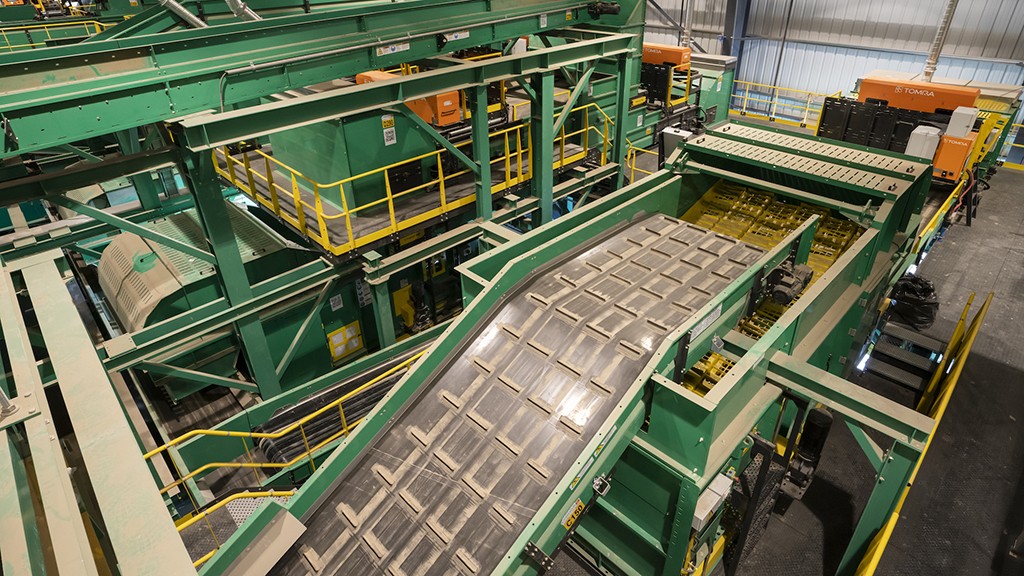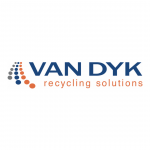The Right and Wrong Places for Ballistic Separators

In recent years, we have seen a trend of replacing screens with ballistic separators. Ballistic separators come with a major advantage: they do not have any stars or discs. This means they do not wrap like traditional disc screens and they do not incur wear that requires costly star changes. We love ballistic separators as much as the next guy (we call ours an elliptical screen because of its resemblance to the exercise equipment), however, we believe that ballistics have their optimal place and that trying to employ them at certain junctions in your system could be a mistake.
How do you avoid that mistake? First let's clarify how ballistic separators work. They have long paddles that undulate at alternate intervals to separate 2-dimensional material from 3-dimensional material. 2D material walks up the paddles and falls over the screen. 3D items bounce back and off the screen onto a conveyor. And—for a bonus—you can separate out fines as well by adding holes to the paddles. Ballistics seem to perform the same function as a starscreen, but without the wrapping and the star replacement. Sounds like a win-win, right?
The Potential Risk
The catch is that ballistic separators are picky when it comes to their "diet." They are very sensitive to the composition of material they are fed and prefer a mix that contains a high percentage of 3D material (bottles and cans) and a low percentage of 2D material (last bits of fiber and film). They do not perform well with the opposite ratio: a high percentage of 2D material and a low or equal percentage of 3D. When a high percentage of fiber hits a ballistic screen, there is not enough agitation created to properly clean the fiber from prohibitives. For this reason, putting ballistic separators too early in the system is a risk. Big piles of fiber, film, and other lightweight flattened items can overload the screen and compromise its separation ability.
To run the system when a ballistic separator is overloaded and struggling like this, the operator has two choices:
- Slow the system down to lighten the load.
- Send the 2D fraction that carries over the struggling screen directly to residue, because it is a jumble of unsellable paper mixed with film, bottles and cans.
Most operators we know do not have the time to slow down their systems and lose capacity. So, most will go with option 2: letting a mix with potentially valuable fiber, bottles and cans go to residue.
We understand the temptation to use ballistic separators early in a system or to install multiple ballistics—no wrapping and no stars to change. That is also what we like about them. In efficient designs, a larger cut of material is taken early on in the system with a 440 non-wrapping screen (with larger shafts). Due to its resistance to wrapping, this screen offers the same benefits of less wear and tear, fewer star changes and increased production; plus, it is specifically built to handle the larger amounts of 2D material that are present at the front end of a system.
The Proper Placement
Once the 440 screen removes a high percentage of the 2D material, operators should examine the amount of fiber still left in the back and under the remaining 3D stream. Is the volume of remaining fiber small enough for a ballistic to handle or would fiber be more effectively removed by an intelligent device (an optical sorter, robot or human)?
At this stage, we find most MRFs need an intelligent separation device (in this case an optical sorter) to recover the remaining fiber. Why do we recommend intelligent sorting? Because this is where a screen's limitations start affecting the sort line. Sure, recent developments in screening technology, like ellipticals and non-wrapping screens, have alleviated some of the worst problems related to contamination. However, think about everything a starscreen or ballistic separator still cannot do. A ballistic cannot tell the difference between a milk jug or a 3D Amazon box. It cannot tell the difference between a piece of fiber and a super thin-walled PET water bottle that has been flattened. And, it definitely cannot tell the difference between a piece of newspaper and a film grocery bag. Anything flat is going over the screen, and anything 3D is bouncing off.
Placing a ballistic at this juncture in the system will likely result in two very imperfect streams: the 'Overs', being, yet again, a mix of fiber, flat PET, flat aluminum, and film, and the 'Unders', being a mix of containers and 3D fiber (think small browns). Little is accomplished here. Material will not be in any better a position than before and, in fact, will need significant cleanup on both sides to achieve optimum recovery of all materials.
On the other hand, an intelligent separation device placed at this juncture in the system can make significant progress in sorting this material. Because optical sorters have the capability to recognize items by shape, color or specific material composition, they are essential in dealing with the highly variant and problematic material in today's stream. An optical sorter placed directly after a 440 screen can strategically eject the fiber that has made it into the container stream, without letting film and flattened containers go with it. Opticals can identify and eject all types of fiber at this point, including light sheet paper, 3D boxboard and chip board (like cereal boxes), and send it to a quality control line.
After that optical sorter ejects the fiber remaining in the container stream, now is where the elliptical screen comes in to do what it is good at: "polishing" up your container line by removing the last bit of remaining film and fines material. This screen is perfectly designed to walk any remaining film up and over its paddles while simultaneously screening out 2″ minus material via holes in those paddles. Remember, it needs a higher percentage of 3D material to function properly. When it is in the right place, it is wonderfully efficient. Those 3D items will bounce back and off the screen onto a conveyor headed for container separation.
Now you will have a container stream that is as clean as can be, with homogenous material that is able to spread out on the belt, unencumbered by floating paper and boxes. You will get a more accurate performance from your optical sorters, from your robots and manual sorters, and see fewer valuable containers and fiber lost to residue.
The Bottom Line
We cannot stress enough how important the placement of new equipment is. You cannot simply drop a new piece of equipment wherever you think is most convenient and expect it to work seamlessly. If the placement choice is the wrong one, it will greatly affect the entire plant throughput, the quality of your fiber, the fiber capture rate, and the quality of the 3D containers passing to the container sort. (Neither optical sorters nor robots like to dig through paper and film while trying to sort containers.)
Make sure you physically audit your inbound material stream constantly. Be specific: take pictures, note sizes and shapes, and study the trends and changes that could affect your equipment placement. If you decide to upgrade from outdated screens and are enticed by the ballistic design, make sure your supplier knows the best strategy in applying the latest screening technology. Sometimes what sounds too good to be true is exactly that. Your supplier should be realistic in assessing the inbound material that you have and honest about the retrofit layout you need to accomplish your goals. Otherwise, you could end up spending money on a retrofit that solves one problem but perpetuates another.


